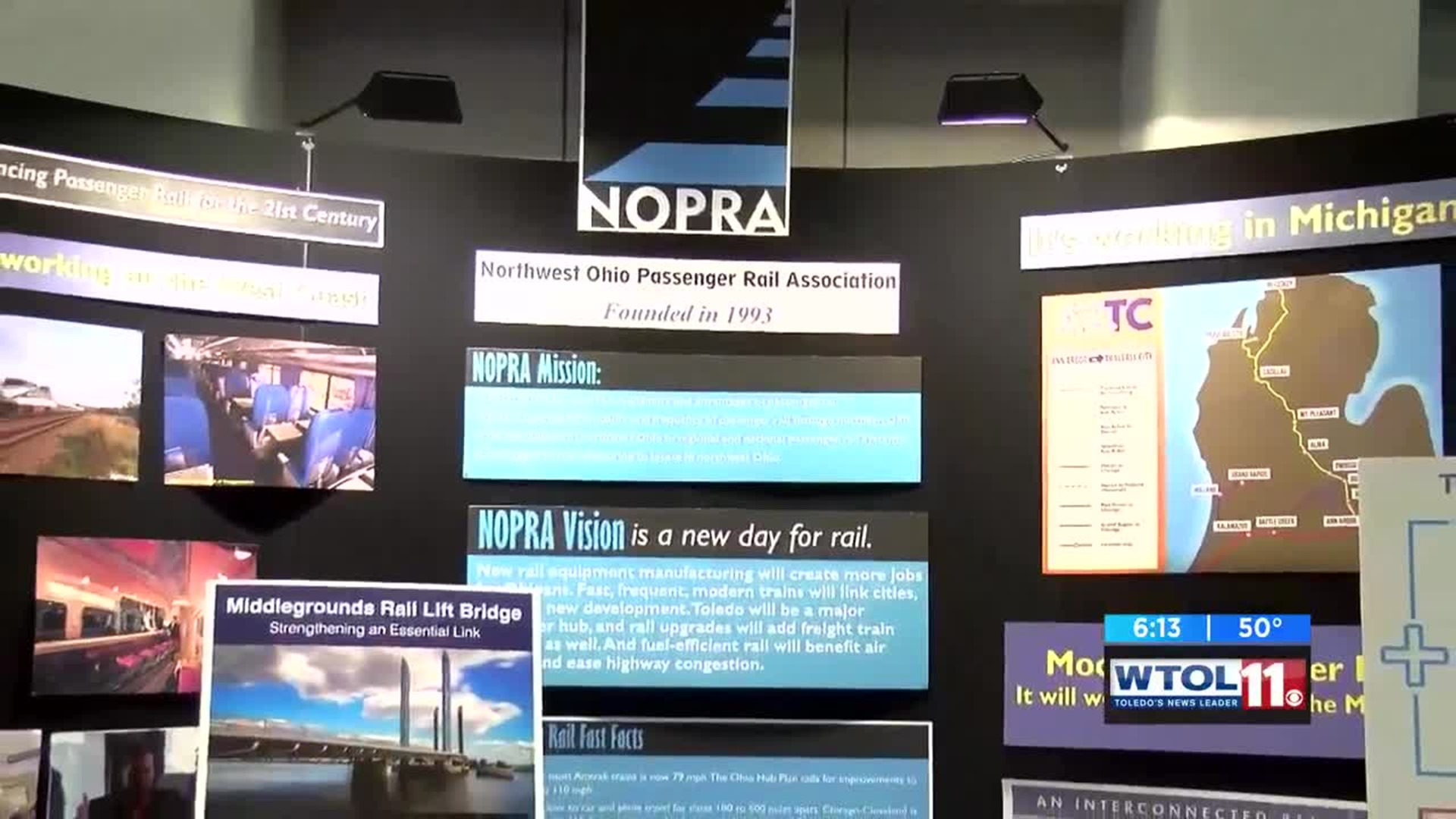TOLEDO (WTOL) - From the Grand Lobby of the Dr. Martin Luther King, Jr. Plaza, railway officials met today in Toledo to discuss adding more passenger trains to the area.
The real potential this could have for your future travel in and out of Toledo has some impact.
Expanding services is also expected to increase tourism to Toledo. This trend has been seen in five of these projects already across the country, including an expanding railway from Boston to Maine, one from Washington, DC that now goes to Lynchburg, Va, and is expected to expand to Roanoke, Va., as well as another in the Southwest from Oklahoma City to Fort Worth, Texas.
Tim Porter, Chairman of the Board for the Northwest Ohio Passenger Rail Association also serves as the Chairman of the Passenger Rail Committee at the Toledo Metropolitan Area Council of Governments (TMACOG).
“Economic development always comes when you have passenger rail,” he said.
At the Toledo train station, a plan was discussed to add railroad transit from Ann Arbor to Traverse City, eventually as a stop going all the way from Traverse City to Columbus.
The feasibility study is something Toledo plans to expand upon in the coming years.
The 2018 keynote speaker at today’s annual Passenger Rail Forum is Alexander Metcalf, PhD, the president of Transportation Economics and Management Systems, Inc.
He shared information about his study on the feasibility of a passenger rail corridor in Michigan between Traverse City and Ann Arbor.
"Passenger rail makes a lot of sense for connecting up the medium sized cities like Toledo to the big cities like Columbus, and Cleveland, and Chicago, et cetera,” Dr. Metcalf said.
Right now, four passenger trains go from east to west out of Toledo every day to cities like Chicago, but that number used to be much higher.
Years ago, some 50 trains used to take passengers through the Glass City on a daily basis.
With this north to south expansion, a lot more opportunities have opened back up.
"It’s just a short trip from Ann Arbor to Toledo. Once you establish a North South route from Ann Arbor to Toledo we could also be able to establish a route from Toledo to Columbus. We are already working on that through Lima and Columbus, so it's not like it's out of the feasibility,” said Porter.
It would require building more tracks.
Existing tracks through our area are overwhelmingly used for freight purposes like hauling grain and vehicles.
It's a trend these experts say is resurfacing in part because of the high price of oil, affecting road and air travel, and lessening Americans attachment to their personal vehicles, especially among younger demographics.
"When these services are put in, they generally do pretty well. The reason being that, basically, gas prices have increased dramatically. Going to increase again in the near future. We’re all going to be lucky if we’re not paying, you know, three, four dollars a gallon soon again, and also, highway congestion has got to a point where it’s quicker not to go by train than it would be to go by highway. Air prices are going up because, basically, oil drives a good proportion, at least 40 percent or airline costs, so again, we are expecting airfares to rise too,” said Metcalf.
Officials say they do expect this project to materialize, and work to begin sometime between the next three to 15 years.
The same groups that conducted this study are also currently reviewing the capacity for the proposed Great Lakes hyperloop super train.
Dr. Metcalf is an internationally renowned expert in demand forecasting, transportation modeling and systems development.
He was chief economist with British Rail including work on the English Channel Tunnel and was responsible for the planning for the rail/airport connection studies for Heathrow, Stansted Airport and Gatwick Terminal 2 projects.
His recent studies include Great Lakes Hyperloop Feasibility Study, Cascadia High Speed Rail Study, Hiawatha Service Freight Capacity Study, and the Chicago-Fort Wayne-Lima Business Plan, in addition to the Traverse City to Ann Arbor Corridor Study.

